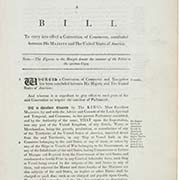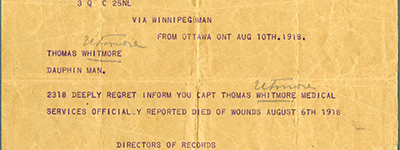CANADA HISTORY - DOCUMENTS NATIVES
Letter from George Simpson, Governor of the Hudson's Bay Company, to Andrew Colvile, member of the Governing Committee in London, 20 May 1822
Analysis of the Document - (The Document follows below the Analysis)
The Letter from George Simpson, Governor of the Hudson's Bay Company, to Andrew Colvile on May 20, 1822, is a critical historical document that provides deep insight into the inner workings of the Hudson’s Bay Company (HBC) during a transformative period in Canadian history. Written by Simpson, who played a pivotal role in shaping the HBC’s strategies, this letter discusses plans for restructuring the company’s operations, which were vast, spanning much of northern North America. Simpson's leadership and vision would help consolidate the company’s control over the fur trade, dramatically influencing the economic and territorial development of what would become Canada.
In the early 19th century, the fur trade was not only an economic engine but also a force of geopolitical significance. The Hudson’s Bay Company, already a dominant player, was engaged in intense competition with the North West Company. This rivalry was costly and undermined the profitability of both enterprises. In 1821, the British government compelled the two companies to merge, a landmark event in Canadian history, which Simpson's letter reflects upon. His correspondence with Colvile, a senior figure in the HBC’s London-based governing committee, touches on the need to streamline operations, reduce costs, and reassert control over Indigenous partnerships that were vital to the fur trade.
The letter reveals Simpson’s strategic thinking as he proposed reducing redundancies, closing less profitable posts, and concentrating efforts on more lucrative areas. His plans were instrumental in shaping the economic landscape of western and northern Canada. Under his governance, the HBC began to operate with the efficiency of a corporate monopoly, gaining near-total control of the fur trade and cementing its influence over vast swathes of territory. This influence extended far beyond commerce; the HBC effectively acted as a governmental entity, administering justice, managing local populations, and negotiating with Indigenous nations.
Simpson’s correspondence with Colvile also sheds light on the complex relationships between European settlers, traders, and Indigenous peoples. The letter emphasizes the need for continued reliance on Indigenous knowledge, labor, and trade alliances, while also hinting at the colonial mindset of control and exploitation. The interactions between the HBC and Indigenous groups would later evolve into complex, often fraught relationships, especially as the company expanded its territorial claims and resources became scarcer.
In the larger context of Canadian history, Simpson’s letter is an essential artifact in understanding how Canada’s northern and western territories were developed. The HBC's dominance in the region laid the groundwork for Canada’s eventual expansion westward, especially after Confederation in 1867. The territories governed by the HBC would later become part of the Dominion of Canada through significant land transfers, including the historic purchase of Rupert’s Land in 1870, which fundamentally shaped Canada’s geographic and political boundaries.
Additionally, the letter highlights the early foundations of corporate governance in Canada. Simpson’s approach to management—emphasizing cost-cutting, efficiency, and centralization of control—reflected the practices that would later define modern corporations. The HBC’s legacy as one of the longest-standing companies in the world owes much to Simpson’s administrative reforms, which allowed it to survive and thrive in an increasingly competitive and changing world.
In conclusion, Simpson’s letter to Andrew Colvile on May 20, 1822, is far more than a piece of business correspondence. It is a key document in the economic, social, and political development of Canada. It provides insights into the corporate strategies that allowed the Hudson's Bay Company to become a dominant force in the fur trade and a major influence on the expansion of Canada’s borders. Moreover, it sheds light on the complex and often contentious relationships between European settlers and Indigenous peoples, whose interactions would shape the course of Canadian history for generations to come.

Alcohol & the Fur Trade
It is not my province to go into this subject in a moral point of view and shall therefore confine my opinion thereon as to the effect such restriction might have on our Trade. If the quantity of Spirits given to Indians was calculated I am satisfied it would not amount to a pint p. man annually on an average, which may give some idea of the extent of Crime likely to result therefrom; and I'll venture to say there are not three murders committed annually on the average of the last Ten Years in the whole tract of Country occupied by the Hudson's Bay Coy. from ebrity. As an article of trade it is not generally used and I do not suppose we make Ten packs of Furs p. annum by it: it is, however, the grand Stimulus to call forth the exertions of the Indians and I have often heard them reason thus, "it is not for your Cloth and Blankets that we undergo all this labor and fatigue as in a short time we could reconcile ourselves to the use of Skins for Clothes as our forefathers did, but it is the prospect of Drink in the Spring, to enable us to communicate freely and speak our minds to each other that carries us through the Winter and induces us to Work so hard." This I really believe to be the case, and that if Spirits were withheld it would materially discourage them and produce a lassitude which Weight of other property could not remove.-- In the Provision Countries it is, however, a very principal article of Trade and indispensibly necessary: the Plain Indians are a bold, independent race, Dress entirely in Skins and with them Tobacco and Spirits are the principal commodities, a Quart of Mixed Liquor will at times procure more Pounded Meat and Grease than a Bale of Cloth, indeed our whole profit in that Trade is upon those articles, and if Provisions were paid for in Dry Goods they would eat up all the gains of the Fur Trade. I therefore sincerely hope the Committee will take due time to examine this subject and that they will not prematurely determine thereon as it might be very injurious to the interests of the Concern.
Cite Article : www.canadahistory.com/sections/documents
Source: Public Archives of Canada, Selkirk Papers, M.G. 19, EL (1), vol. 24.



